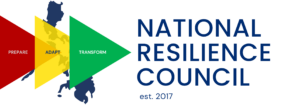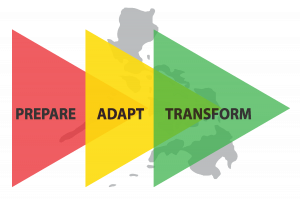In the News
Recent News

Philippines best to lead in global disaster management – UN
Manila, Philippines — Being a disaster-prone country and for its efforts in making the country and people disaster-resilient, the Philippines is in the best position to be the global leader in disaster risk reduction and management (DRRM), the United Nations International Strategy for Disaster Reduction (UNISDR) said yesterday.
UN Secretary-General for Disaster Risk Reduction’s special representative Robert Glasser made the declaration before business executives and other private and government stakeholders at this year’s Top Leaders’ Forum (TLF) held at the Conrad Hotel in Pasay City.
The Philippines, he said, is one of the most disaster-prone countries in the world. Coupled with the initiatives it has been making since Super Typhoon Yolanda (Haiyan) hit the country in 2013, the country is in the best position to show the world the best practices in DRRM.
The TLF is a private sector conference convened by the UNDISDR and SM Prime Holdings Inc. (SMPHI) to find concrete measures that would make businesses more disaster-resilient.
In the 2015 TLF, the group established the Private Sector Alliance for Disaster Resilient Societies (ARISE) with SMPHI as the secretariat for the Philippine chapter.
“The Philippines as we know is one of the most significantly exposed countries in the world to these hazards – volcanic, seismic, tsunami, extreme weather – they are all here…and they create huge impacts – loss of lives, the economy – so this really is a critical issue for us to discuss and address,” Glasser said.
Aside from sitting on the so-called ring of fire, the Philippines is visited by around 18 to 20 typhoons annually, some of which can be very destructive.
Glasser said the creation of the National Resilience Council (NRC) is an innovative step that will demonstrate globally the Philippines as the pioneer in best DRRM practices and climate change adaptation initiatives.
“The NRC is a global best practice because nowhere in the world, wealthy and developing, has this model which engages business, civil society and science and technology tighter with the government to address DRRM and climate risk,” Glasser emphasized.
The integrated model on DRRM and climate risk assessment, according to him, is a major opportunity for the Philippines to demonstrate the best DRRM practices as well as to showcase its climate change integration in planning and implementation in all sectors of society.
Catastrophe arising from climate change like weather, increasing temperatures, devastating floods and ecological risks, among others, account for over 70 percent of all major disasters all over the world and they have doubled in frequency over the past decades.
“They are expected to get worse in the years to come. This is why DRRM and climate change adaptation should be integrated like what is being done by the NRC,” Glasser said.
The NRC is co-chaired by the Department of National Defense (DND) and SMPHI. It is the first public-private partnership on DRRM that engages both the government and private businesses with civil society communities to contribute to national and local legislation and policy development to make the country better prepared to cope with disasters.
SOURCE:
Laude, J. (2017, November 29). Philippines best to lead in global disaster management – UN. The Philippine Star. Retrieved from https://www.philstar.com/headlines/2017/11/29/1763898/philippines-best-lead-global-disaster-management-un
Recent News

PREPARE. ADAPT. TRANSFORM.
National Resilience Council
MOA Square, Seashell Lane cor.
Coral Way, Mall of Asia Complex, Brgy. 76
Zone 10, CBP 1A, 1300, Pasay City
Metro Manila, Philippines
Copyright ©️ 2024. National Resilience Council. All Rights Reserved.

